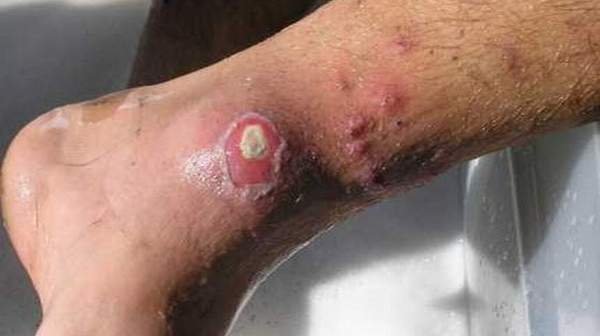
What's in this article?
Staph infection Overview
Staph infection are caused by staphylococcus bacteria, types of germs commonly found on the skin or in the nose of even healthy individuals. Most of the time, these bacteria cause no problems or result in relatively minor skin infections.
But staph infections can turn deadly if the bacteria invade deeper into your body, entering your bloodstream, joints, bones, lungs or heart. A growing number of otherwise healthy people are developing life-threatening staph infections.
Treatment usually involves antibiotics and drainage of the infected area. However, some staph infections no longer respond to common antibiotics.
Staph infection facts
 ♦ Staphylococcus is group of bacteria that can cause a multitude of diseases.
♦ Staphylococcus is group of bacteria that can cause a multitude of diseases.
♦ Staph infections may cause disease due to direct infection or due to the production of toxins by the bacteria. Boils, impetigo, food poisoning, cellulitis, and toxic shock syndrome are all examples of diseases that may be caused by Staphylococcus.
♦ Symptoms and signs of a localized Staph infection usually include a collection of pus, such as a boil, furuncle, or abscess. The area is typically tender or painful and may be reddened and swollen.
♦ Methicillin-resistant Staphylococcus aureus, known as MRSA, is a type of Staphylococcus aureus that is resistant to the antibiotic methicillin and other drugs in this class.
♦ Staph infections are treated with topical, oral, or intravenous antibiotics, depending upon the type of infection.
What Are the Symptoms of a Staph Infection of the Skin?

Staph cellulitis usually begins as a small area of tenderness, swelling, and redness. Sometimes it begins with an open sore. Other times, there is no obvious break in the skin at all.
The signs of cellulitis are those of any inflammation redness, warmth, swelling, and pain. Any skin sore or ulcer that has these signs may be developing cellulitis. If the staph infection spreads, the person may develop a fever, sometimes with chills and sweats, as well as swelling in the area.
Staph infections can range from minor skin problems to endocarditis, a life-threatening infection of the inner lining of your heart (endocardium). As a result, signs and symptoms of staph infections vary widely, depending on the location and severity of the infection.
Other staph infections of the skin include impetigo, a painful rash that is contagious, boils, and in babies and young children, staphylococcal scalded skin syndrome, which causes rash, blisters, and fever.
What’s the Treatment for a Staph Infection?

Antibiotics are used to treat staph infections. But there’s been a gradual change in how well these antibiotics work. While most staph infections used to be treatable with penicillin, stronger antibiotics are now used.
In about 50% of cases, however, resistance is seen to even these stronger antibiotics. These cases are no longer just happening in hospitals as once was true but now are occurring in the general community. That’s been a problem. Many doctors are accustomed to using certain antibiotics, but those then fail because of antibiotic resistance. There are several more potent antibiotics now, but doctors need to know when to use them to prevent further antibiotic resistance.
There’s another treatment sometimes used with staph infections. If the infection goes so deep that it involves muscles or fibers that enclose muscles, it needs to be surgically cleaned.
Who is at risk for Staph infections?

Anyone can develop a Staph infection, although certain groups of people are at greater risk, including newborn infants, breastfeeding women, and people with chronic conditions such as diabetes, cancer, vascular disease, and lung disease. Injecting drug users, those with skin injuries or disorders, intravenous catheters, surgical incisions, and those with a weakened immune system due either to disease or a result of immune suppressing medications all have an increased risk of developing Staph infections.
Staph infections are contagious until the infection has resolved. Direct contact with an infected sore or wound, or with personal-care items such as razors, bandages, etc., are common routes of transmission. Casual contact such as kissing or hugging does not pose a great risk for transmission if there is no direct contact with the infected area.





